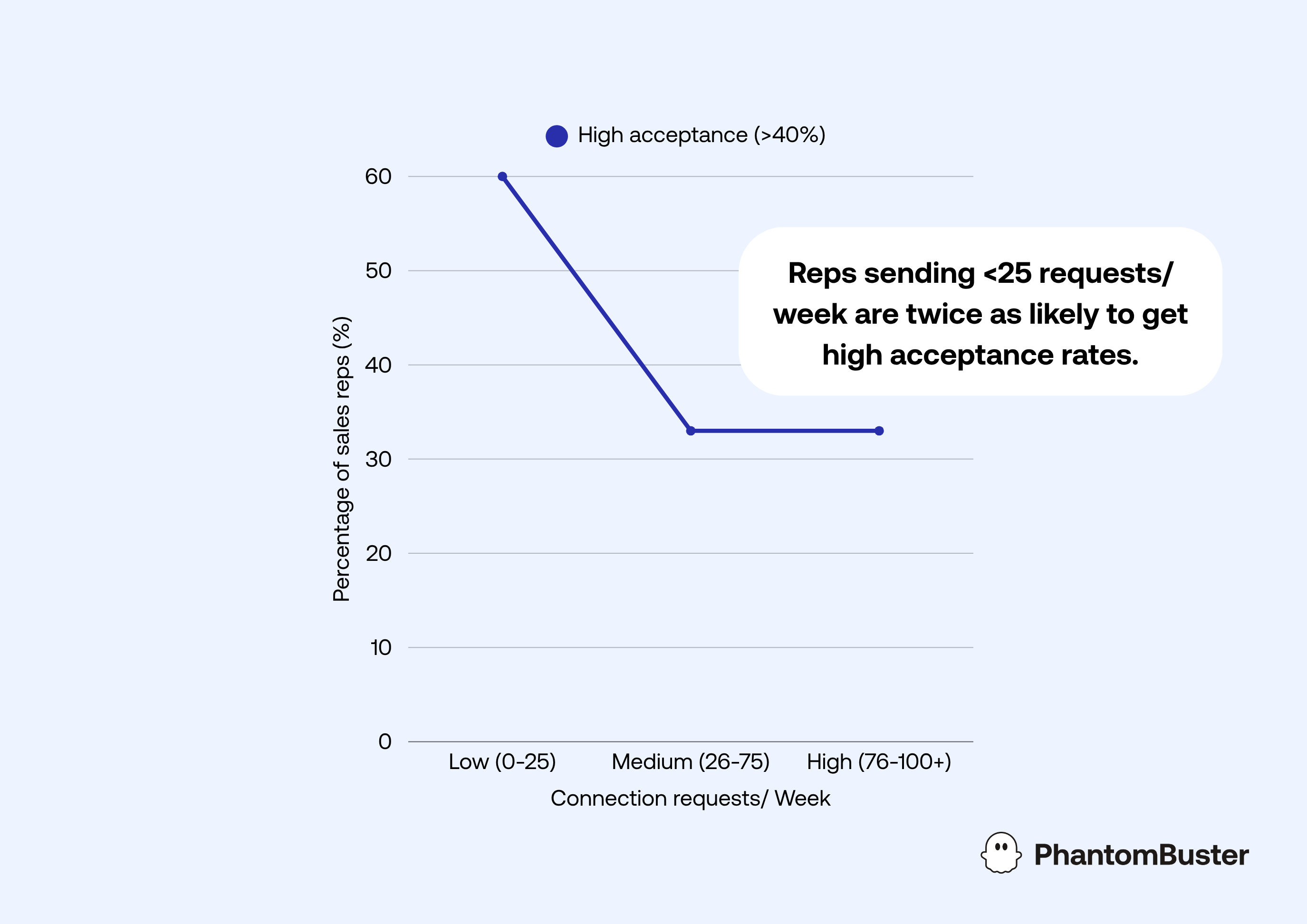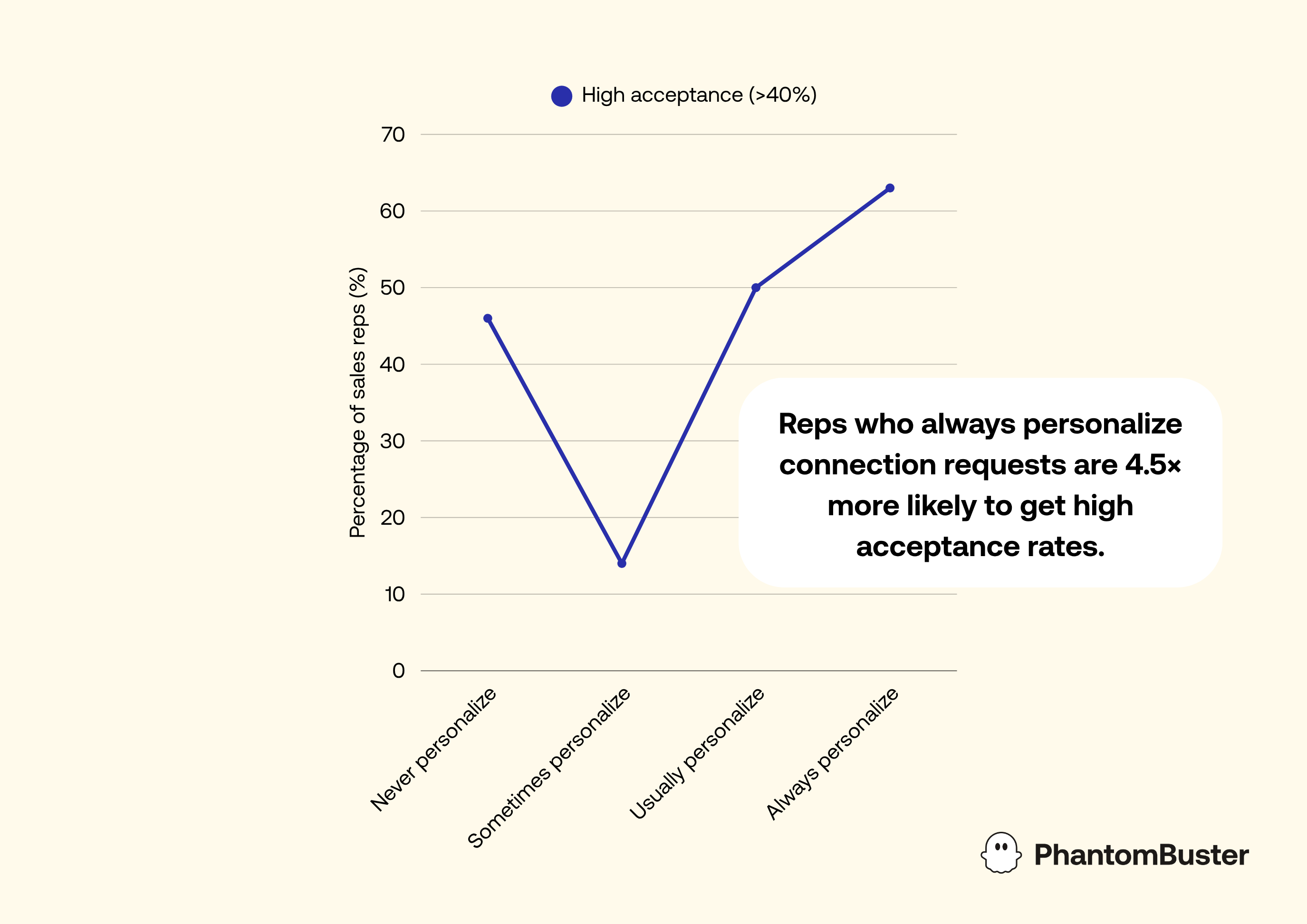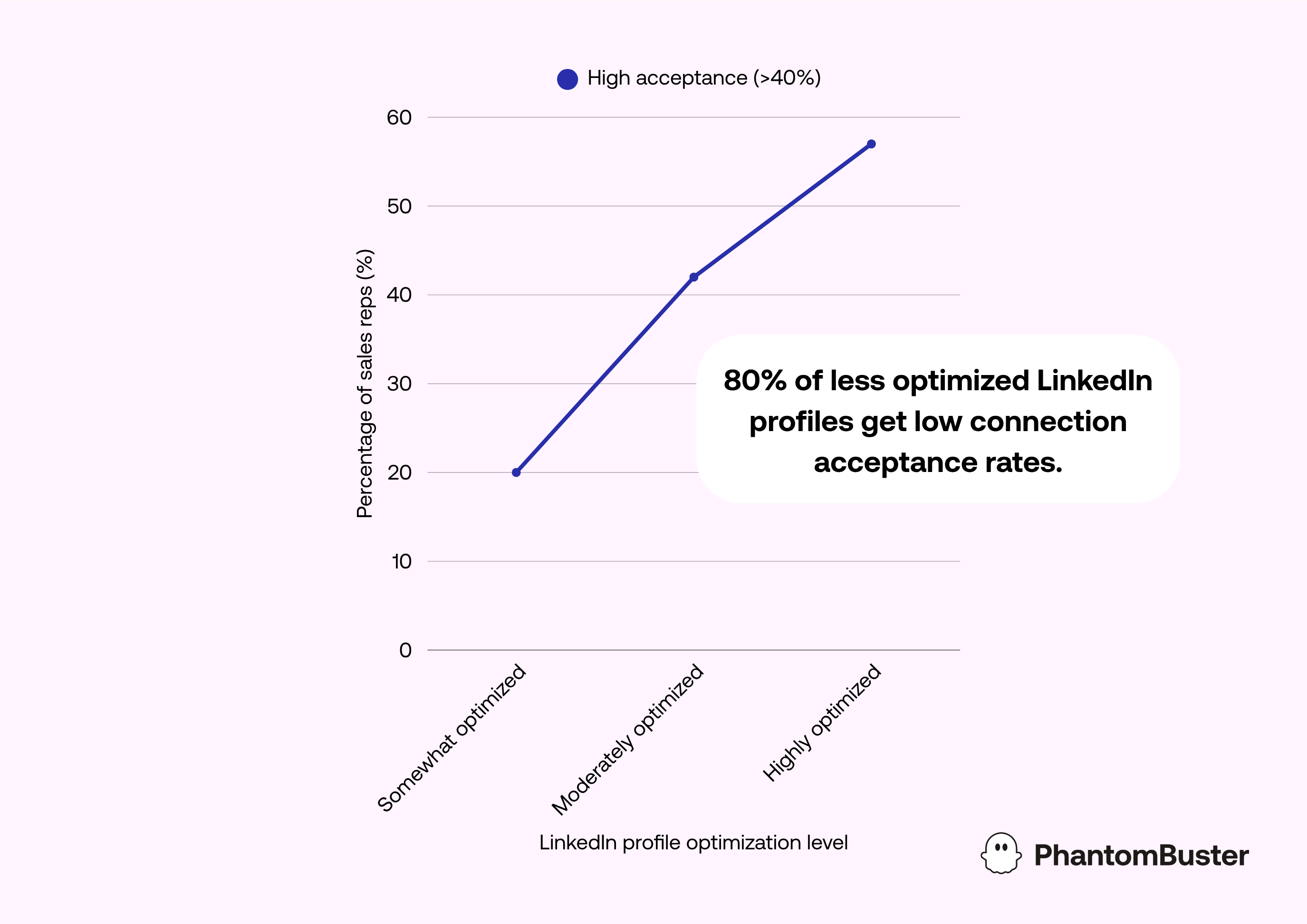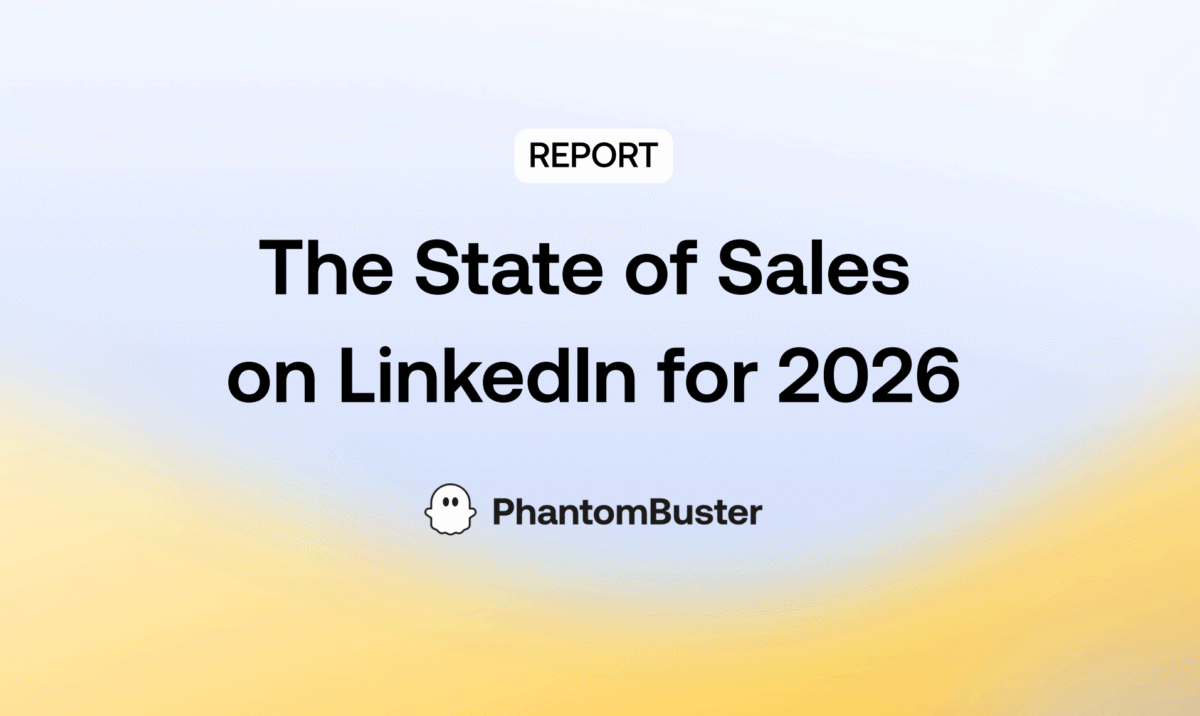LinkedIn remains the go-to arena for B2B sales. But the rules have changed. In our latest industry report, we analyzed sales reps’ prospecting habits. And, funnily enough, people who send fewer connection requests are actually getting more interest.
It looks like high-volume tactics can hurt acceptance rates, and even AI isn’t always saving time (at least, not in the way you’d think).
This data offers a glimpse of where LinkedIn prospecting is headed in 2026, with smarter targeting, deeper personalization, and a philosophical shift from “send more” to “connect better.”
Vanity metrics are out, and quality interactions are in. Here’s what the numbers reveal, along with what today’s sales teams can do to stay ahead.
Read the full report: The State of LinkedIn Prospecting For Sales Team in 2026
Benchmarks: What LinkedIn Prospecting Looks Like Today
To see what really drives results on LinkedIn, we shared an online survey with B2B sales professionals in Q4 2025. We asked them about what’s working, what’s not, and what’s next.
Here’s a snapshot of some industry trends that came up:
| Metric: | Benchmark: |
|---|---|
| Avg. connection requests sent: | ~51/week |
| Avg. connection acceptance rate: | ~30-40% |
| % that personalize messages: | ~66% |
| Avg. time spent on LinkedIn prospecting: | ~3-10 hours/week |
| Avg. meetings booked via LinkedIn: | ~5/month |
But these numbers only tell part of the story; one where activity doesn’t always equal impact. Let’s dive into the six counterintuitive truths our data exposed, and what they mean for your 2026 LinkedIn strategy.
1. Sending Fewer LinkedIn Connection Requests Boosts Acceptance Rates
Our data shows that reps who send fewer than 25 connection requests per week are nearly twice as likely to achieve a 40%+ acceptance rate as those who send 26 or more.

In other words, there’s a clear “LinkedIn prospecting volume tax.” The more you send, the less likely people are to accept. High-volume outreach often triggers the same responses as cold emails: being ignored, deleted, or flagged as spam.
This means that precision is the new productivity. The most successful LinkedIn sales teams are narrowing their target audience, refining their ICPs, and making every request feel intentional.
☑️ The takeaway
Focus on quality, not quantity. You want to invest in warm leads, verified contact data, and fewer, better-qualified prospects. Big numbers might “look” good, but they don’t necessarily end in closing deals.
2. Personalized Connection Requests Get Stronger Results
Personalization is a defining factor in whether your prospecting efforts actually turn into conversations. Reps who always personalize their outreach are 4.5× more likely to achieve high connection acceptance rates than those who only personalize occasionally.

But there’s a caveat. Only doing it sometimes can be worse than not at all. The data shows a sharp drop among “occasional personalizers,” suggesting that inconsistent messaging erodes trust. When your tone flips between genuine and generic, prospects can tell. And your credibility will suffer for it.
The best-performing sales reps treat each invite like a handshake. They craft personalized outreach that references specific details, such as a recent post, shared event, or company milestone.
☑️ The takeaway
Think about your empathy and intent. A single mention about someone’s work or pain point can make all the difference between an ignored request and a warm conversation. If in doubt, make it about them, not you.
3. An Optimized LinkedIn Profile Doubles Your Conversion Odds
Your LinkedIn outreach starts way before you hit “connect.” It’s already happening the moment someone lands on your LinkedIn profile.
Our data shows that 80% of sales reps with little-optimized profiles see connection acceptance rates below 40%, while those with even moderate optimization perform 110% better. This is because credibility now begins at the click of your name.

A well-crafted profile signals professionalism before you ever send a message. If you want your personal branding to do the heavy lifting for you, you need:
- A custom banner that reinforces your niche or offer
- A strong headline that delivers a clear value proposition
- A concise sales pitch written in your “About” section
- Relevant content such as thought leadership posts, client wins, or case studies
Decision makers no longer vet sellers solely by what they say in a DM. They scan your profile to decide whether you’re worth connecting with at all.
☑️ The takeaway
Your LinkedIn profile is actually your landing page. Treat it like one. Optimize every element so that you can boost business growth before you’ve even hit “Send.”
4. AI, Automation and CRMs Don’t Save Time, But They Do Boost Results
42% of people said they use LinkedIn automation tools to save time. But if you thought technology would free up your calendar, think again. While it correlates with higher conversions, it is also linked to deeper time investment.
- LinkedIn automation tools: Automation users are the only group reporting 5+ meetings per month from the platform. Yet over half (51%) still spend more than five hours a week on LinkedIn. In other words, automation isn’t saving time. It’s shifting how that time is used.
- AI-assisted prospecting: Those who use AI extensively book 3.5× more meetings from LinkedIn than those who don’t. But they also log higher hours on the platform. Occasional AI users actually spend the most time of all, suggesting that experimentation eats up more energy than consistent systems.
- CRM integration: The same trade-off remains. Teams with fully connected workflows report twice as many meetings booked from LinkedIn as those without. But they also spend the longest hours on LinkedIn. Integration encourages better follow-up, cleaner lead management, and data-driven decisions, yet it deepens overall commitment.

Adopting technology is evidently worthwhile, but teams shouldn’t believe that they can “set it and forget it.” They still have to invest time and energy to get the best out of their tools.
The good news is that once they’ve established the best workflows, they can reallocate that time to other LinkedIn sales activities, such as deeper personalization and precise targeting.
☑️ The takeaway
Technology can enhance effort, but it doesn’t replace it entirely. Invest in comprehensive systems that support your sales funnels, but don’t view them as a shortcut.
5. 4 New Prospecting Archetypes Are Emerging
When we mapped activity, acceptance rates, and outcomes across the sample, four distinct archetypes emerged. Each had its own philosophy, rhythm, and results.
| Archetype | Behavior | Median request volume | Median acceptance rate | Median hours/ week | Efficiency (Accepted requests/ hour) |
|---|---|---|---|---|---|
| Accelerator | High connection requests (76-100+)
High acceptance (>40%) |
100 | 45% | 7.5 | 6 |
| Spinner | High connection requests (76-100+)
Low acceptance (<40%) |
100 | 25% | 7.5 | 3.33 |
| Cruiser | Low connection requests (0-25) High acceptance (>40%) | 5 | 56% | 5.2 | 0.53 |
| Drifter | Low connection requests (0-25) Low acceptance (<40%) | 5 | 35% | 4 | 0.43 |
Each represents a different relationship with LinkedIn, and a different approach to lead generation:
- Accelerators: Fast and focused. They’ve mastered their prospect research and know exactly which target companies to approach. Their secret is efficiency, not volume.
- Spinners: Busy but ineffective. They chase cold leads in every direction, measuring success by key metrics like volume rather than results.
- Cruisers: Quality-first, steady growth. For them, LinkedIn is more than just a platform. It’s part of a relationship-building system that consistently delivers qualified leads.
- Drifters: Underinvested and underperforming. They post occasionally, send sporadic requests, and wonder why nothing happens.
☑️ The takeaway
There are two playbooks in the report to help you emulate the archetype that matches your goals. For example, if you want to be efficient, then the Accelerator approach might be the best fit. Or, if you want to maximize acceptance rates, than you’d do better to follow the Cruiser philosophy. Download the report to access the guides.
6. LinkedIn Prospecting Priorities For 2026: More Time, More Thought Leadership
When asked what they plan to change next year, many sales professionals said they’ll spend more time on LinkedIn, and they’ll create more content.

Teams are moving away from “spray and pray” outreach to strategic content engagement. LinkedIn prospecting has left the inbox, and it thrives in the feed. This means that posting relevant content, engaging with decision makers, and building genuine authority all support conversions.
In 2026, sales reps will act more like creators. They’ll use thought leadership to share insights and warm up cold audiences before outreach even begins. That means turning multiple touchpoints like profile visits, comments, or reposts into a subtle trust-building moment.
It takes more time, but it could be the secret to more effective prospecting next year.
☑️ The takeaway
The best sellers in 2026 will turn LinkedIn content into a superpower. This credibility will shorten the sales cycle, making them trusted authorities among their industry peers.
Conclusion
LinkedIn’s top performers aren’t necessarily the ones sending the most cold messages or powering through lead lists. Often, it’s the people who do simple, consistent steps, like personalizing every first message and using advanced search filters to find the right prospects.
Ultimately, you want prospects to trust your voice. You want them to see your insights, company news, and lead magnets out in the wild. And then build an authentic connection with them, one follow-up message at a time.
Want the full data breakdown, charts, and playbooks? Download the State of Sales on LinkedIn for 2026 report now.
Frequently Asked Questions (FAQs) about LinkedIn Prospecting
What is a good acceptance rate for LinkedIn connection requests?
According to our 2025 industry data, the average acceptance rate sits between 30% and 40%. Top performers (those we classify as “Cruisers” and “Accelerators”) consistently achieve rates above 40% by focusing on personalization and highly targeted outreach. If your rate is below 30%, it’s a signal to refine your targeting or improve your connection message.
Does sending more connection requests lead to more meetings?
Not necessarily. Our study found a “volume tax”: sales reps who sent fewer than 25 requests per week were nearly twice as likely to achieve high acceptance rates (>40%) as those who sent over 100. High-volume outreach often triggers spam filters or user fatigue, leading to lower overall engagement. Precision beats volume in 2025.
How does AI impact LinkedIn prospecting results?
AI is a force multiplier for effectiveness, not just a time-saver. Reps who use AI extensively book 3.5x more meetings than those who don’t. However, they also spend more time on the platform, suggesting that AI is best used for deep research and hyper-personalization rather than just automating bulk tasks.
Is LinkedIn Sales Navigator worth it for small teams?
Yes. Our data indicates that successful “Accelerator” archetypes—those maximizing efficiency—often leverage advanced tools like Sales Navigator to refine their ICPs. The ability to filter for intent signals (like job changes or recent posts) is critical for maintaining the high acceptance rates required to make LinkedIn a viable revenue channel.
5. Should I personalize every LinkedIn connection request?
Yes. Reps who always personalize their requests are 4.5x more likely to see high acceptance rates than those who do so sporadically. Inconsistent personalization can actually hurt your brand, making you appear disjointed or untrustworthy. If you can’t personalize it meaningfully, focus on warming up the prospect through content engagement first.
